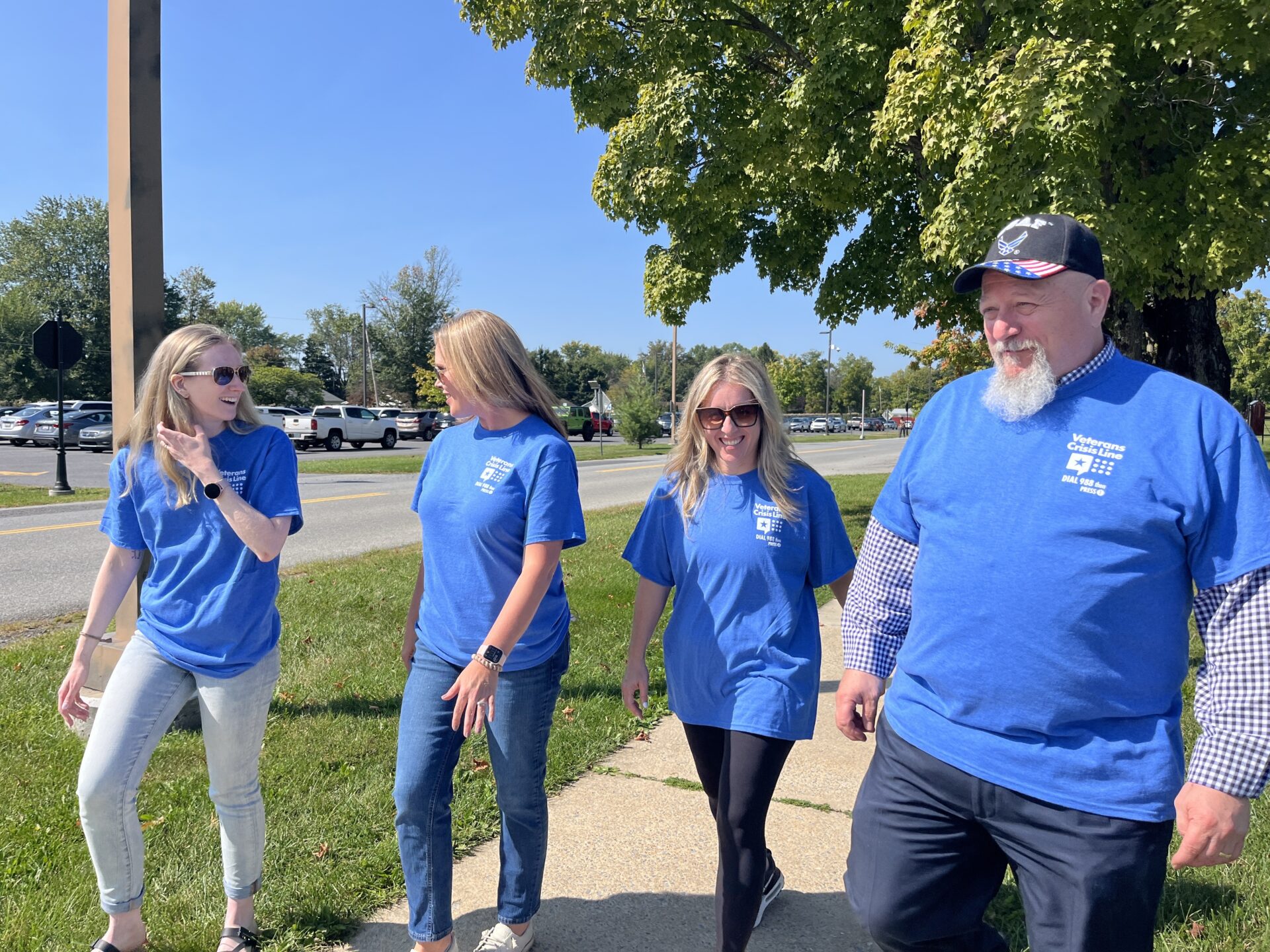In the United States, former military service members are more likely to die by suicide than their non-veteran peers.
While the number of suicides among veterans decreased in 2020, advocates in West Virginia’s Eastern Panhandle say keeping this momentum going requires new conversations about mental health.
Mark Mann serves as chief of staff for mental health services at the Martinsburg VA Medical Center. Before that, he served in the Vietnam War.
In working with veterans, Mann said he sees firsthand how societal stigma around discussing suicide can make it harder to seek help. For him, a first step toward better supporting veterans is being proactive in discussions about mental health.
“It’s about not being scared to ask the question when you see somebody struggling,” he said. “We know from the research and the literature and even folks that have survived very serious suicide attempts that if somebody had stopped and asked and took the time that it could have interrupted that.”
Raising awareness and understanding around suicide in the veteran community is what brings more than 600 people to the hospital campus every September.
On Wednesday, the facility hosted its eighth annual suicide prevention walk. The event began as an effort to honor those veterans who have died from suicide and raise awareness about the issue.
Each year, community members walk a loop around the facility to show veterans how many people are ready and willing to support their mental health needs. The event also features booths with informational resources and educational pamphlets.
Photo Credit: Jack Walker/West Virginia Public Broadcasting
Jill Finkle, suicide prevention coordinator at the hopsital, organizes the event. She described it as a way to physically embody the network of support available.
“It’s part of that stigma reduction,” she said. “Addressing that and normalizing that we’re together, we’re connected.”
Mann, Finkle and the staff at the hospital also know addressing suicide among local veterans takes more than talk. The annual walk is just one part of the facility’s broader mental health programming, Finkle said.
The hospital also offers outpatient services, on-site therapy, residential mental health treatment and specialty services for individuals with post-traumatic stress disorder, military sexual trauma and substance use disorder.
A recent surge in resources like these can be traced back to 2007, when the position of suicide prevention coordinator was created at every VA medical facility in the United States, Finkle said. Having a staff position dedicated to suicide prevention helped establish a more intentional approach to mental health care.
Expanding mental health resources for veterans in the Eastern Panhandle has also included out-of-facility, community-focused programming, according to Jennifer Kelley, community engagement and partnership coordinator at the hospital.
Not all veterans are willing to visit the hospital in person to access mental health services, Kelley said. But hosting less formal programming out in local towns can help establish networks of support for veterans to lean on. Recently, this has included coffee socials led and attended by veterans.
Individuals “who are volunteering their time, they’re connecting with each other,” she said. “They’re building social support networks with each other, and many of them are veterans.”
Photo Credit: Jack Walker/West Virginia Public Broadcasting
Addressing suicide among veterans has also meant looking at related mental health challenges that can harm veteran wellbeing, like substance use disorder, according to Brigit Kirwan, substance use disorder pharmacist at the hospital.
Kirwan said staff at the hospital often encourage patients to take small steps toward improving their situation, rather than making sweeping changes. This can be more sustainable and lay the groundwork for healthier habits, a practice known as “harm reduction,” she said.
This entails “small steps to meet patients where they’re at, what they’re comfortable with and reduce any type of harm,” she said. “Medication isn’t the only way.”
In recent years, there has been a national push to make veterans and the public at large aware of the suicide prevention resources available, Mann said. This includes the 2022 creation of a 988 suicide and crisis hotline.
By dialing the hotline, callers can get connected with support and mental health resources.
Mann said he hopes that the growing number of resources like these can strengthen mental health nationwide, especially among veterans.
But he also hopes to see barriers to accessing help reduced even further. It is why he and hundreds of members of the community gather on the grounds of the hospital every September.
“As a community, I think we really have to lean into that if we’re going to stop this,” he said. “Because it’s not just veterans.”
